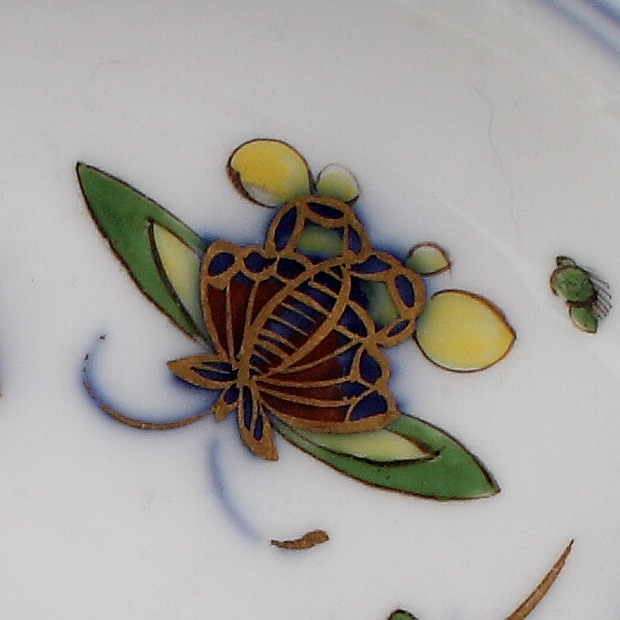Details, top to bottom:
The quality of painted decoration at the Meissen Manufactory increased dramatically when artist Johann Gregorius Höroldt (1696-1775) joined the staff in 1720. Höroldt oversaw the invention of more than sixteen different colors and created many of the illustrations that became standard patterns on Meissen porcelain through the 1740s.
Although many of their patterns were inspired by the decoration on Asian ceramics, the artists at Meissen frequently combined elements from multiple patterns into their own creations. These included the “Branch” pattern, with a multi-limbed tree surrounded with flowers and a butterfly.
Intricately colored pieces like this plate imitated the “Chinese Imari” style of porcelain painting popular in the Kangxi period (1662-1722), and illustrate the complexity of the coloring process. The cobalt blue of the butterfly was an underglaze, a term used to describe a color painted on a biscuit body (raw clay that had been fired once). The underglaze was then coated with a clear glaze and fired a second time. The other colors were applied over the clear glaze after the second firing.






